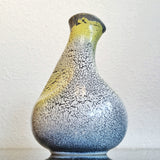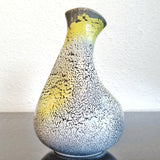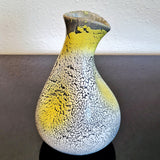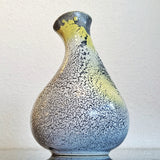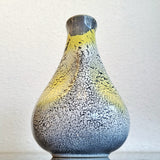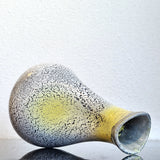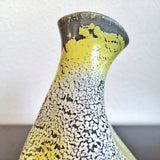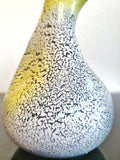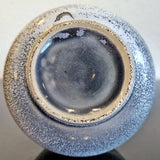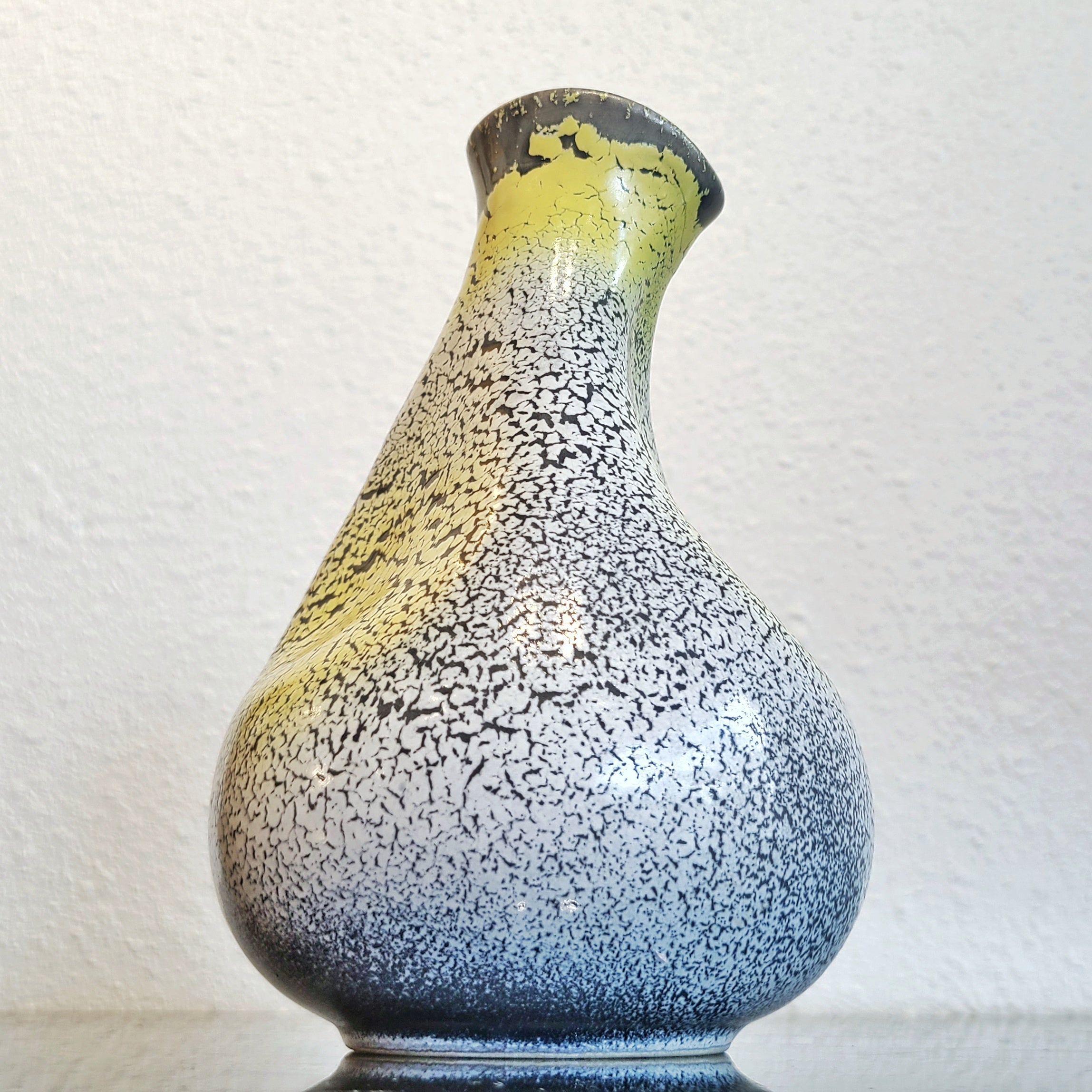
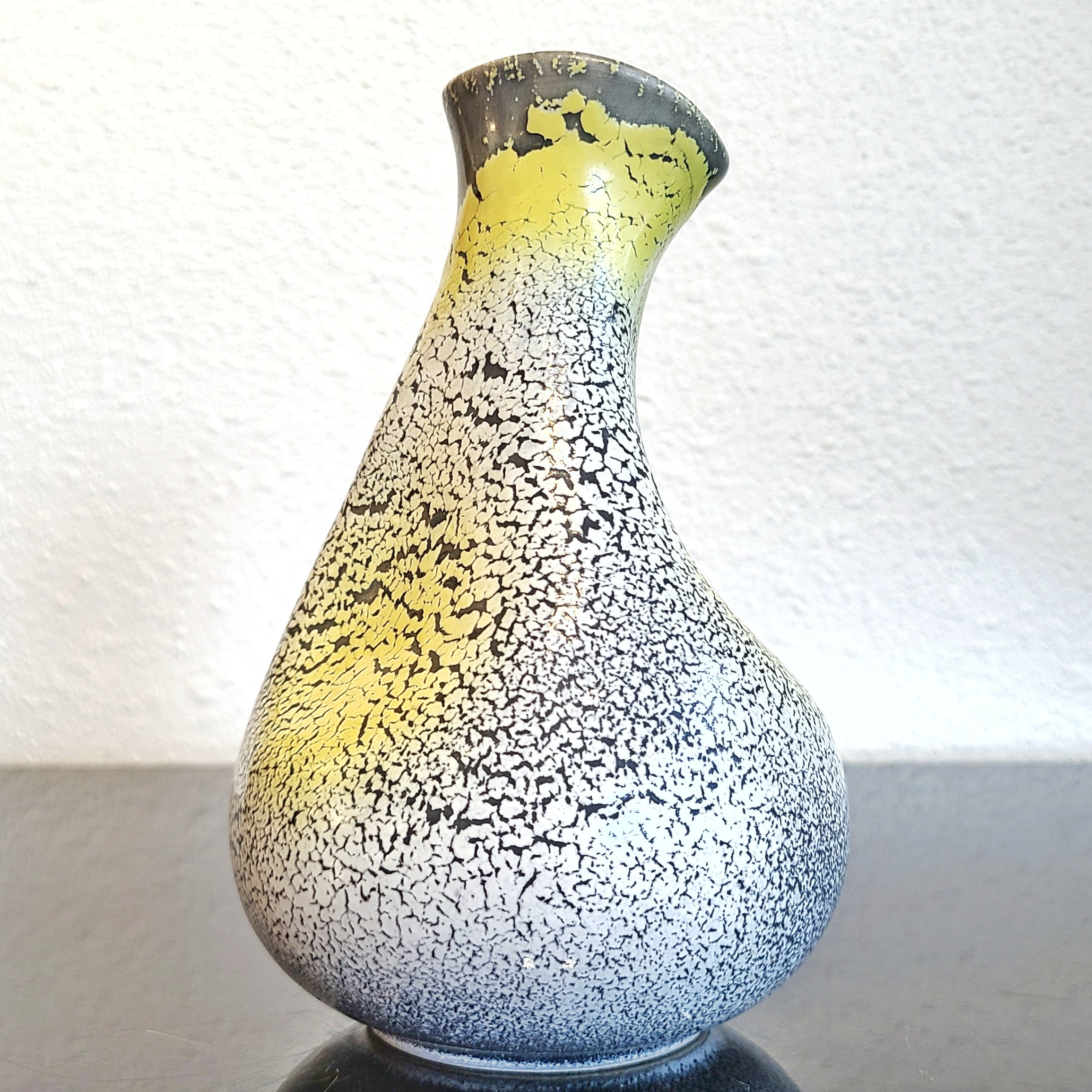

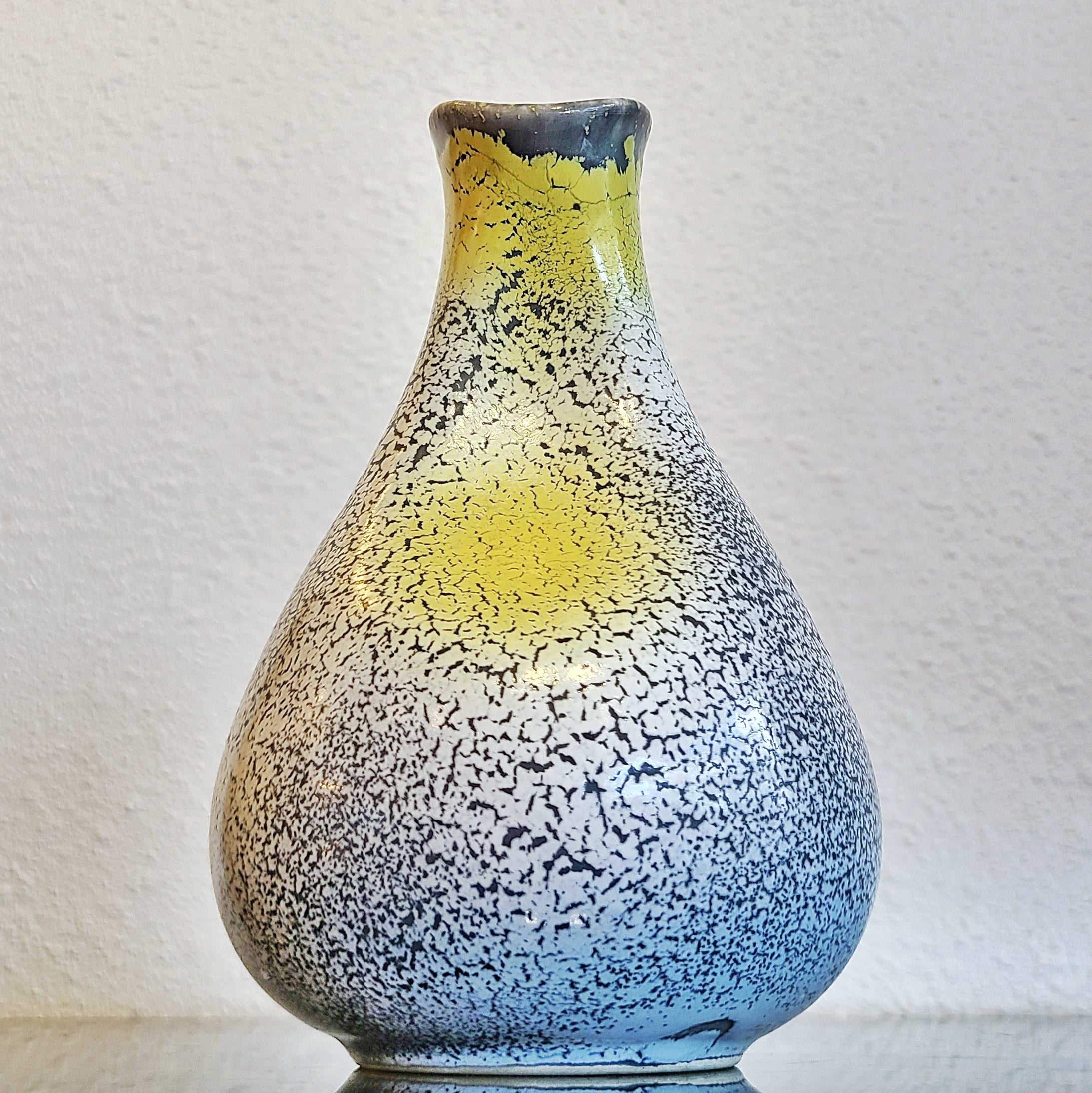
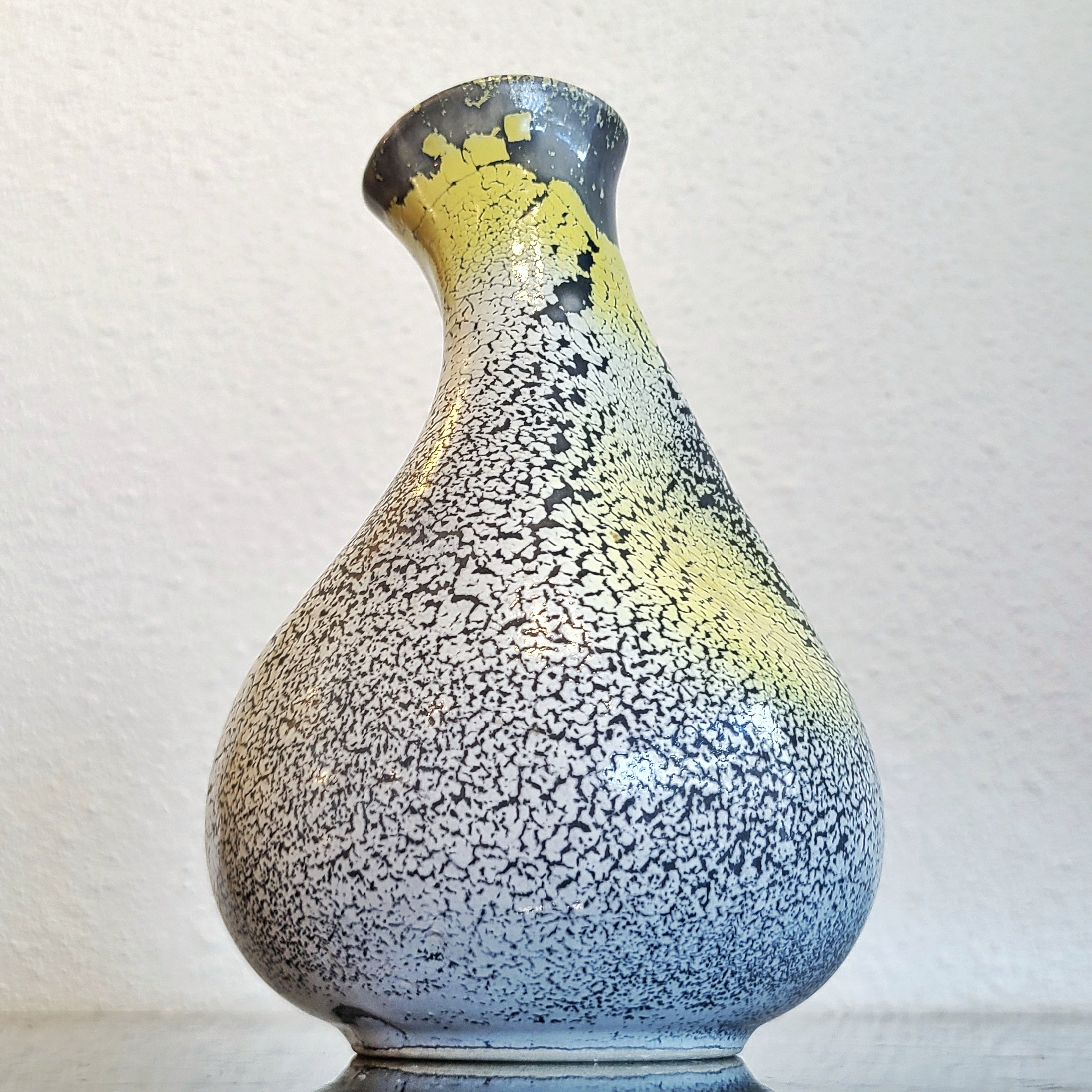
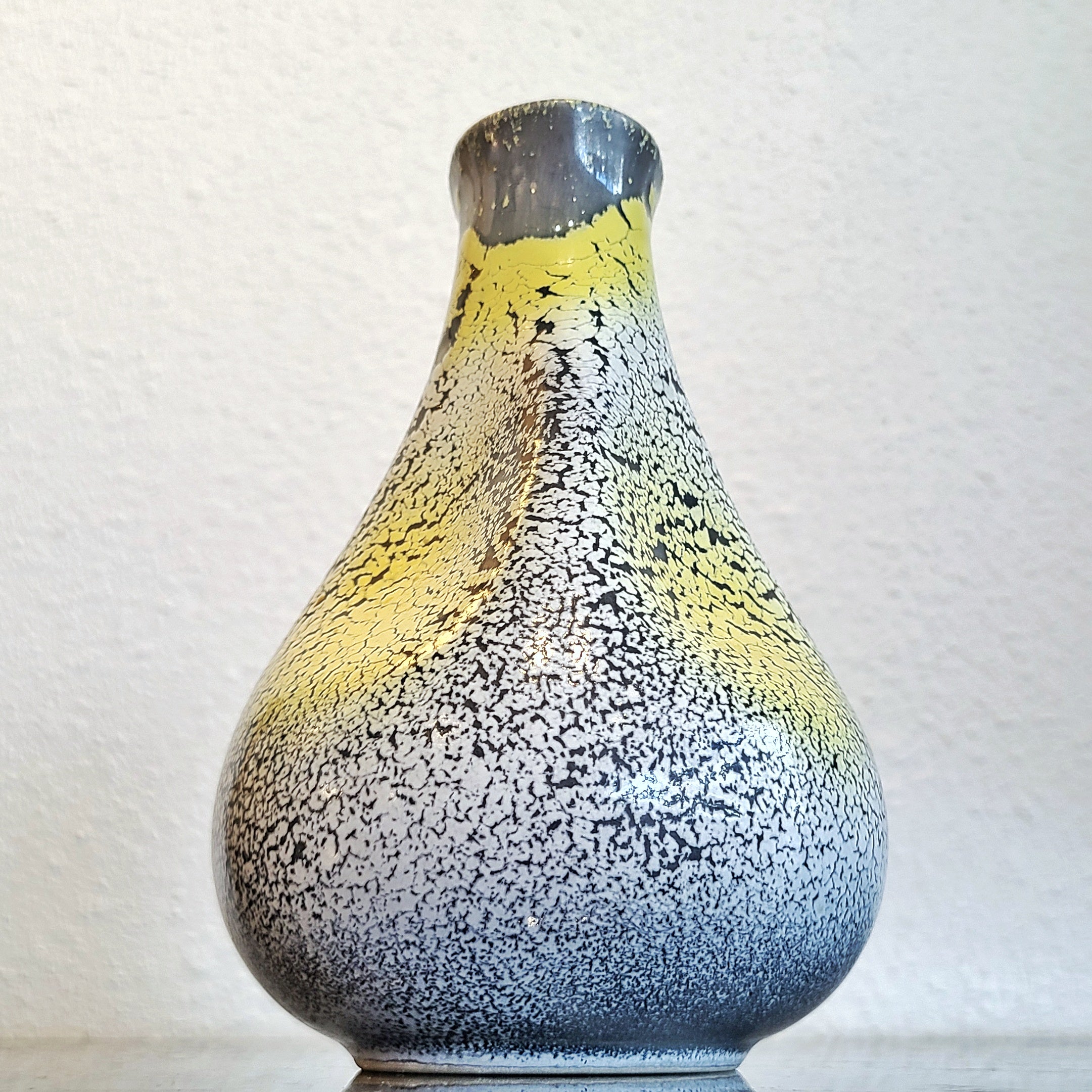
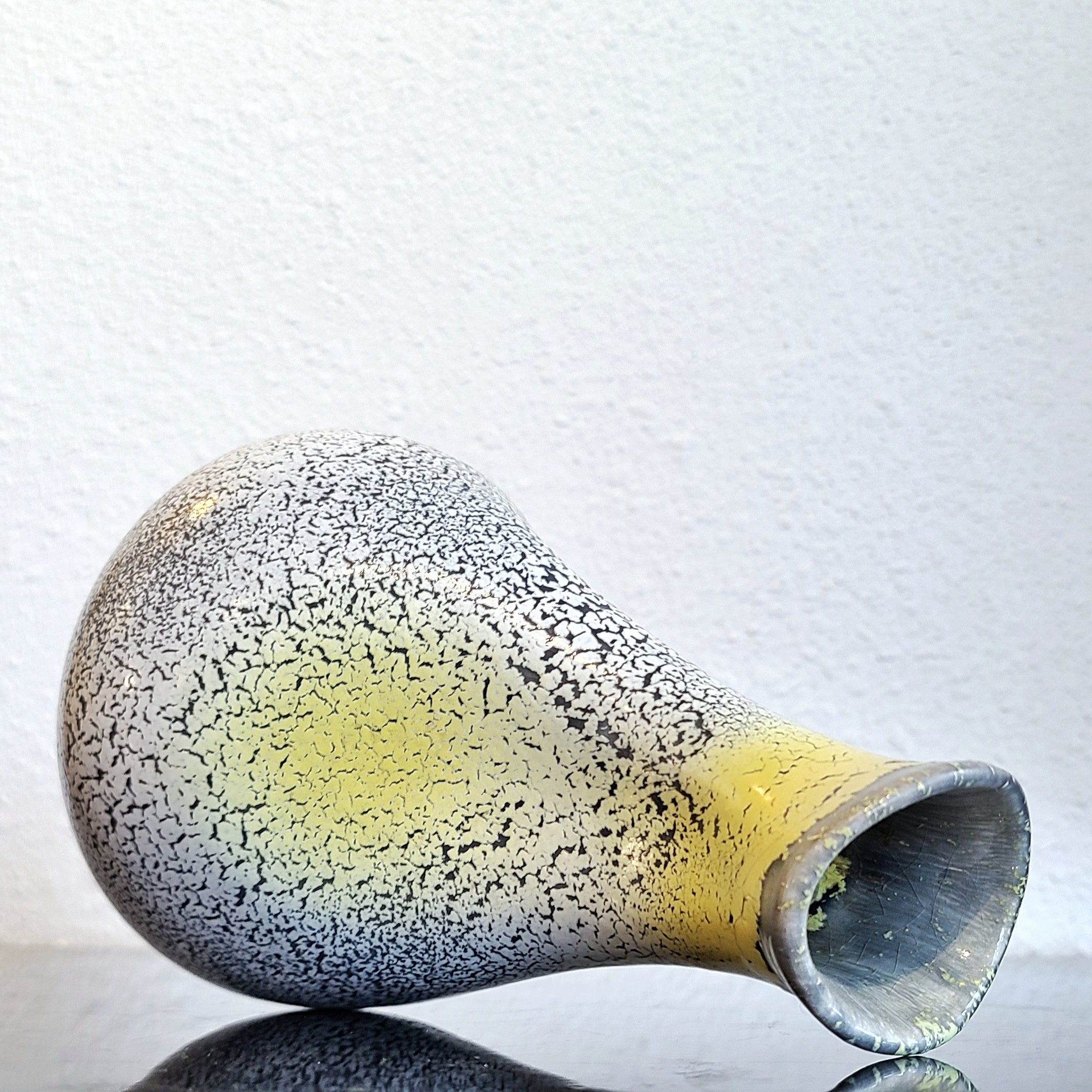
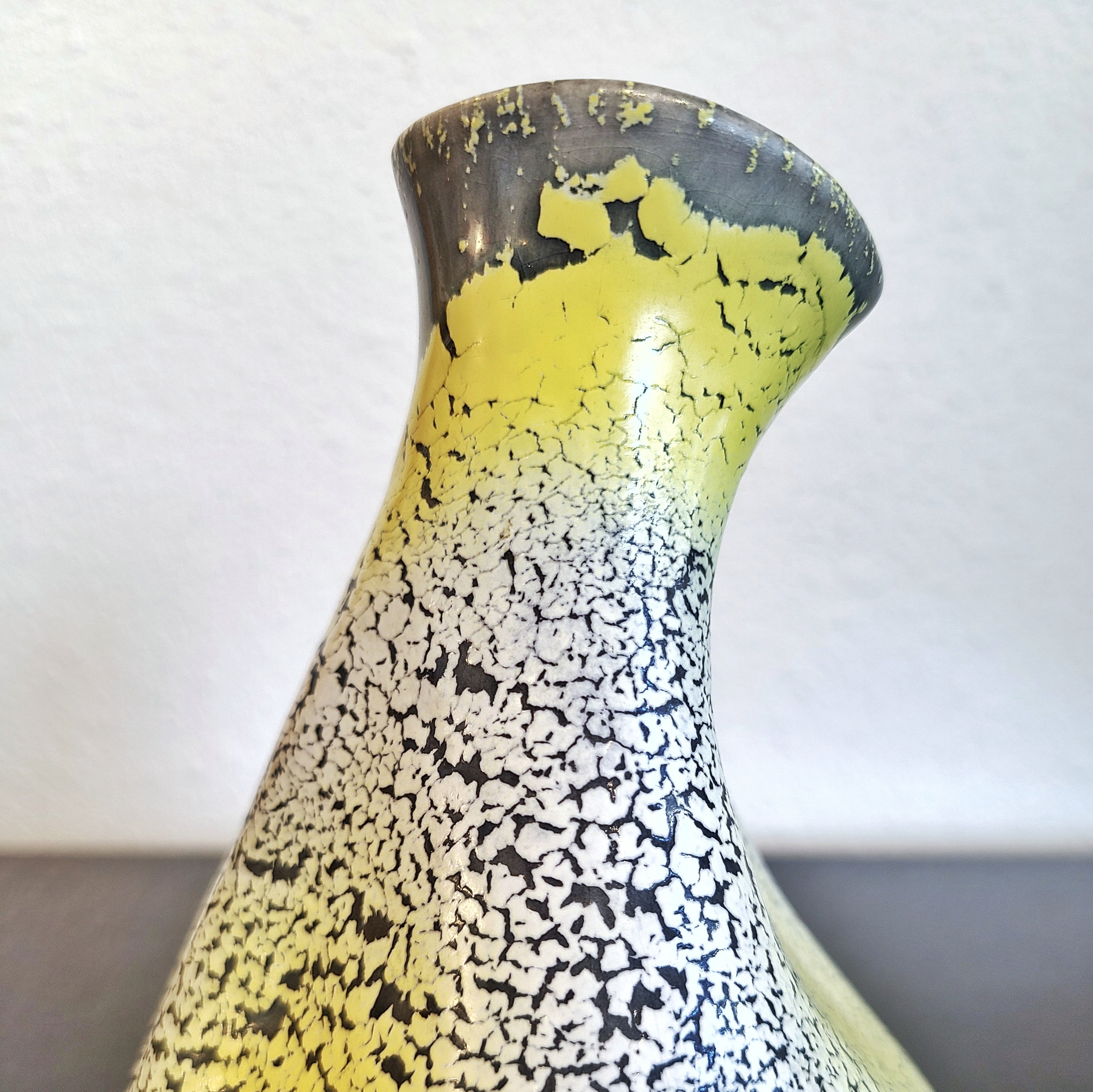

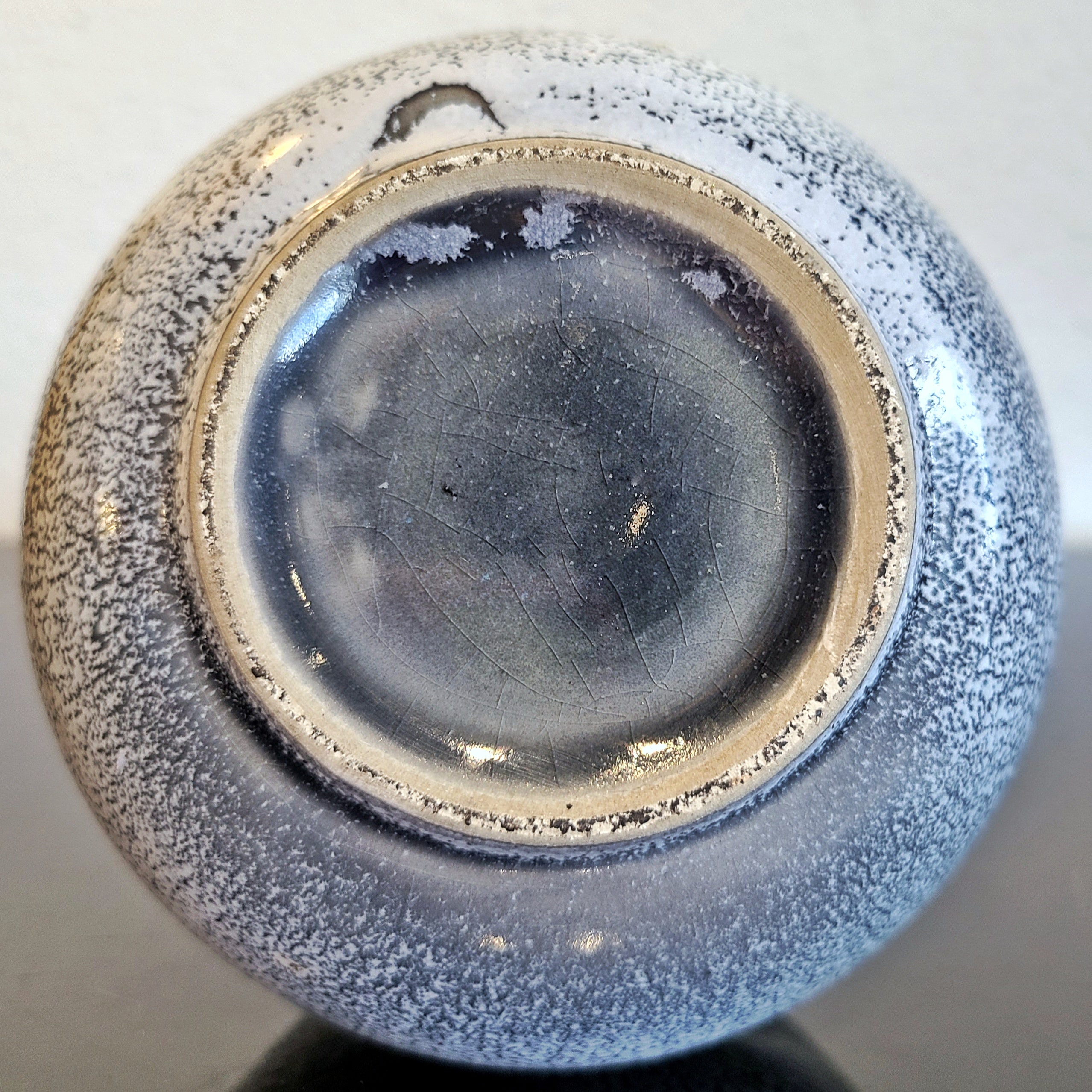
ELFI STADLER ‘CAPRI’ VASE Nr. 4714 FOR SCHRAMBERG MAJOLIKA
CONTACT US HERE ABOUT THIS ITEM.
A rare, organically shaped abstract vase designed in the 1950s by one of SCHRAMBERG MAJOLIKA-FABRIK's most noted and creative designers, Elfi Stadler. The bent and dented form is certainly one of her best, and is dressed in the curdled gray, white, and yellow glaze combination known as Capri.
SCHRAMBERG MAJOLIKA-FABRIK (SMF) was founded as Faist'sche Steingutfabrik in 1820 by the stoneware expert Isidor Faist on the grounds of the abandoned Schramberg castle in the Middle Black Forest region of southwest Germany. By 1829 the factory had acquired the good repute necessary to convince Baron Ferdinand von Uechtritz to join Faist under the new name Steingut und Majolikafabrik Uechtritz & Faist. With the Baron's financial backing, the partners were able to build a new factory behind the castle and to drastically increase output. During the 1860s, the company maintained a workforce of 100 people. An impressive 6,000 home workers—e.g., decorators—mainly women and children, were also employed.
In 1882 SCHRAMBERG began fulfilling orders from Villeroy & Boch, who would buy the factory outright the following year. It continued to operate as a V&B subsidiary into the early 20th century. When several buildings had to be demolished in 1911 to make way for a local railway, severely reducing output, Villeroy & Boch lost interest in the location. In 1912 it was sold to brothers Moritz and Leopold Meyer. The Meyers gave the firm its enduring name, SCHRAMBERG MAJOLIKA-FABRIK, and introduced the "SMF" mark. In 1918, the business was reorganized as a limited liability company (GmbH).
The Meyer brothers were always looking for new talent, and many famous artists joined the factory or contributed designs in the ensuing years. The Jewish-Hungarian designer Eva Zeisel (née Striker, 1906–2011) was a prominent force at SCHRAMBERG during the final years of the 1920s. She was much influenced by the Bauhaus movement, and her modern form and décor designs with their clean, sensuous lines leant an avant-garde appearance to a significant portion of the program. Zeisel sometimes felt that the firm's art department ignored her intended shape and decoration pairings; this was a particular problem with her wildly popular Mondrian décor, which was often applied to forms that other modelers had created. SCHRAMBERG continued to produce Zeisel's designs, or variations thereof, for some time after she left the firm. (On a biographical note, Zeisel would land in jail in the Soviet Union in 1936, falsely accused of involvement in a plot to assassinate Stalin. She only just made it out of Austria to England on the eve of the Nazi invasion.)
With the dawn of the Great Depression, the production focus shifted exclusively to utilitarian ceramics. In 1938 the Meyers, being Jewish, were compelled by the Nazis to sell the factory as part of Germany's forced Aryanization. The following year the brothers emigrated to England with their families. In 1949, Moritz's son Peter Meyer (1922–1980) returned to Germany. His family was allowed to resume control of the business.
The first post-war generation was naturally focused on restoring the damaged factory, but happily, by the beginning of the 1950s, decorative ceramics had regained their former market share. Sophisticated glazes developed by the ceramic director Josef Saradeth and the temporary resumption of the stylized floral décors from the 1920s contributed to the recovery. New designs came from Ingrid Helmbrecht-Witzer and the longstanding senior painter Ferdinand Langenbacher, who had been with SCHRAMBERG since 1918. Other mid-century notables who worked for the company include the engineer Peter Ernhofer and designer Solveig Eriksen.
The highly qualified Elfriede "Elfi" Stadler (1930-1968) joined the firm in 1953. She would build on the Art Deco legacy of her distinguished predecessor, Eva Zeisel, and orient the firm's production toward the modern stylistic tendencies of the time. An Austrian, Stadler received her education at the Vienna University School of Arts and Crafts under the tutelage of ceramicist and sculptor Robert Obsieger (1884-1958). Her forms and décors would determine the appearance of SCHRAMBERG MAJOLIKA products until her departure in 1963. She was noted for experimenting with idiosyncratic shapes, some of which suggest that they were the result of an accident—being bent, curved, and dented. Stadler's really weird shapes are much coveted by enthusiasts and hard to find in collectibles markets. She died very young, 38 years old, but nevertheless remains a luminary in the history of German ceramics.
In 1970 Peter Meyer took over SCHRAMBERG MAJOLIKA as sole owner and continued the work of his father and uncle for another decade. He died from complications after a heart attack in 1980. The factory was afterwards led by various managing directors, among them Peter’s widow, Julie Luise Meyer (1929-2020), with only limited success. Some SCHRAMBERG workers would say that the heart and soul of the facility had died with Peter Meyer. In 1989, the factory was finally closed, and the area was cleared to make room for new industry.
IDENTIFICATION: Products made of plain white limestone earthenware typically bear the company mark and often also the décor name and a four-digit form number under a transparent glaze. Occasionally three-digit form numbers can be found. A red clay series produced between 1956 and 1959 has neither markings nor form numbers. A significant part of the production was for export, mainly to the UK and Scandinavia and to a lesser degree the US. In-country, products were distributed via notable retailers and sold through department stores and mail-order companies.
Beautiful things make people happy. — Eva Striker Zeisel
DETAILS
Maker – SCHRAMBERG MAJOLIKA-FABRIK
Production Period/Year – 1950s
Designer – ELFI STADLER
Design Period/Year – 1950s
Origin – WEST GERMANY
Styles/Movements – ABSTRACT; MID-CENTURY MODERN
Materials – CERAMIC
Colors – GRAY, WHITE, YELLOW
Condition – Excellent vintage condition. No imperfections. May show minor traces of wear consistent with age and use.
Dimensions – 4 ½" DIAM. × 7" H

